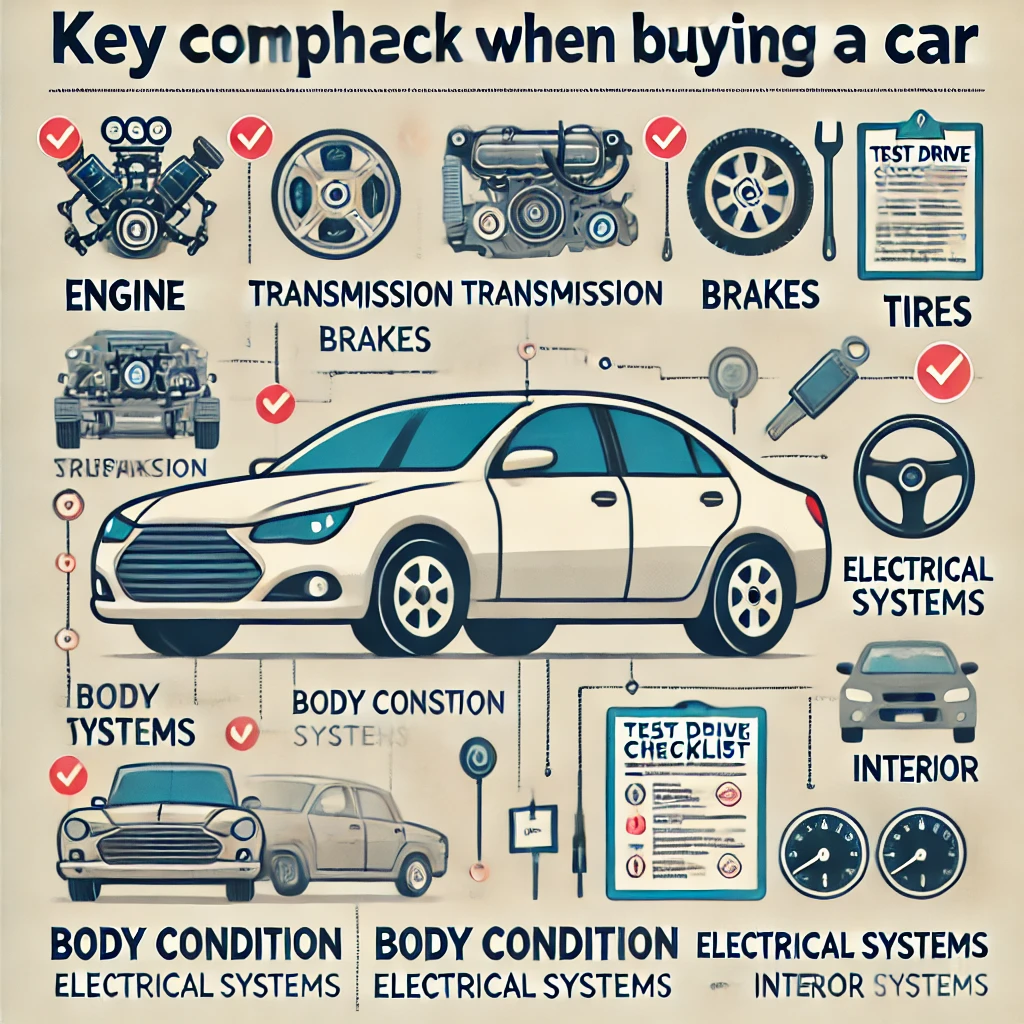
Essential Things to Consider When Buying a Car: A Practical Guide
Buying a car is an important decision that requires careful review. To avoid future issues, it’s crucial to inspect specific parts of the vehicle before making a purchase. Whether buying a new or used car, here’s a guide on the key things To solve this problem, we have put a few topics in front of you, which you can keep in mind while buying your car, because of which you can get a lot of help. Is it or not?
Engine Condition
The engine is the core car, so to ensure it’s in good working order. When inspecting, the engine should start smoothly and operate without unusual noises. Check for any signs of oil or coolant leaks, and make sure the engine doesn’t vibrate excessively. Smoke from the exhaust can be a warning sign of deeper engine issues. Start the car and do not turn it off for 15 or 20 minutes. If a few drops of water come out of the engine, the engine is in good condition.
There is no fault in the process of checking the engine
Transmission Health
A healthy transmission is essential for smooth gear shifts. Test drive the car and notice if it shifts gears easily without any delays or jerks. Whether it’s an automatic or manual transmission, the process should feel seamless. Further, the message fluid should be clear and at the correct level. Dark or burnt-smelling fluid could signal poor maintenance.
Braking System
Safety is paramount, so ensure the brakes are functioning well. The brake pedal should feel firm, and the car should come to a stop quickly without squealing or grinding noises. Check the brake pads and discs for wear and tear, and make sure the brake fluid is at the proper level and clean.
Suspension System
A good suspension provides a smooth driving experience. To check the suspension, push down on the car’s front and rear and see how quickly it bounces back. If the car continues bouncing, it may need new shocks or struts. Also, listen for any unusual sounds while driving over bumps.
Tire Quality
Tires affect both safety and fuel scrimping. Look at the tread depth on all four tires so they aren’t worn out. Uneven tire wear could indicate problems with alignment or suspension. Additionally, confirm that the tires are inflated to the recommended pressure levels.
Body and Exterior
The condition of the car’s exterior can tell you a lot about its history. Inspect the body for signs of rust, dents, or scratches, especially around the wheel wells and under the car. Uneven paint or visible repairs could mean the car was in an accident, which might lower its value.
Electrical Components
The electrical system powers various functions in the car, from lights to the entertainment system. Check the headlights, brake lights, indicators, and interior lights. Test the windows, locks, and dashboard electronics to ensure everything works properly. Warning lights on the dashboard could indicate mechanical problems.
Interior Quality
The car’s interior plays a big role in your comfort. Inspect the seats for wear and tear, stains, or any damage. Ensure that the air conditioning and heating work as expected. Unpleasant smells inside the car, like musty or smoky odors, might signal underlying problems like water damage or poor upkeep.
Test Drive Experience
Never buy a car without taking it for a test drive. During the test drive, check how the car accelerates—it should pick up speed smoothly. Pay attention to the steering and make sure it feels responsive and doesn’t drift to one side. The braking should be smooth, and the car should handle bumps without any rattles or shakes.
Service and Maintenance Records
For used cars, ask to see the service and maintenance records. A that has been regularly maintained is likely to be more reliable. Check if there is a history of any major repairs or accidents. If the car is still under warranty, ask for details about what it covers and how it lasts.
Fuel Efficiency
Fuel efficiency is a crucial factor, especially with rising gas prices. Compare the car’s fuel economy with similar models to ensure you get a vehicle that suits your driving habits. If fuel savings are a priority, you might want to explore hybrid or electric options, which are more eco-friendly and cost-effective.
Pricing and Value
Before you finalize the deal, compare the car’s price with its market value. Use online tools like Kelley Blue Book or Edmunds to determine the fair price for the car based on its condition, age, and mileage. If you notice any issues during your inspection, use them as leverage to negotiate a better price.
Conclusion
When buying a car, inspecting the right parts can save you from future problems and extreme costs. Pay attention to the engine, transmission, brakes, suspension, tires, and other key areas. Take your time, ask for maintenance records, and always go for a test drive to ensure you’re making a smart investment. By following these policies, you can buy a car that fits your needs and budget without worrying about costly repairs down the road.


